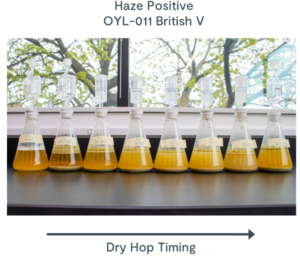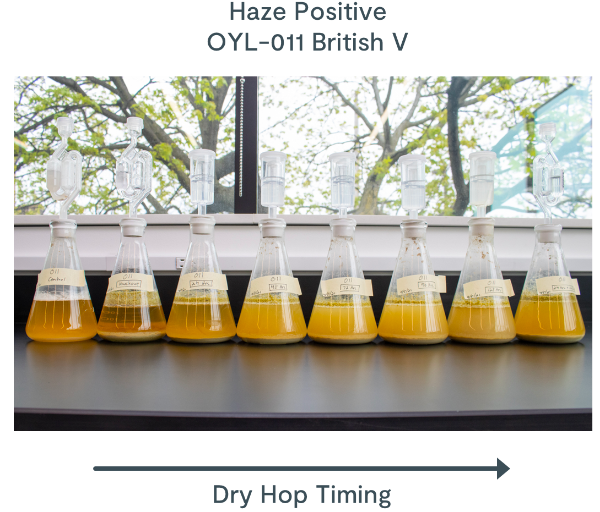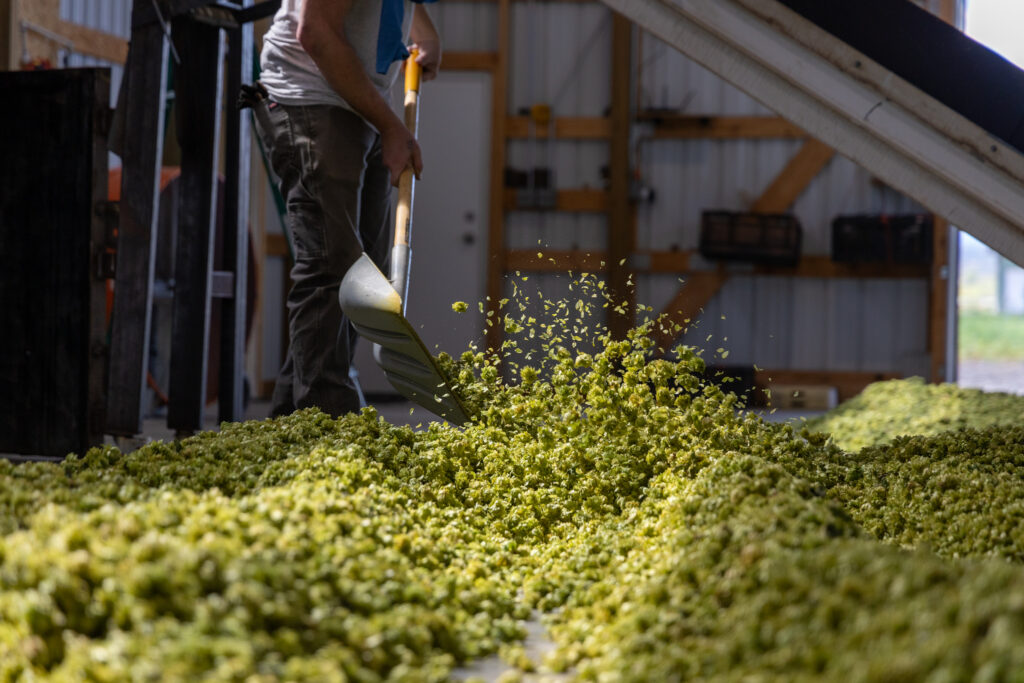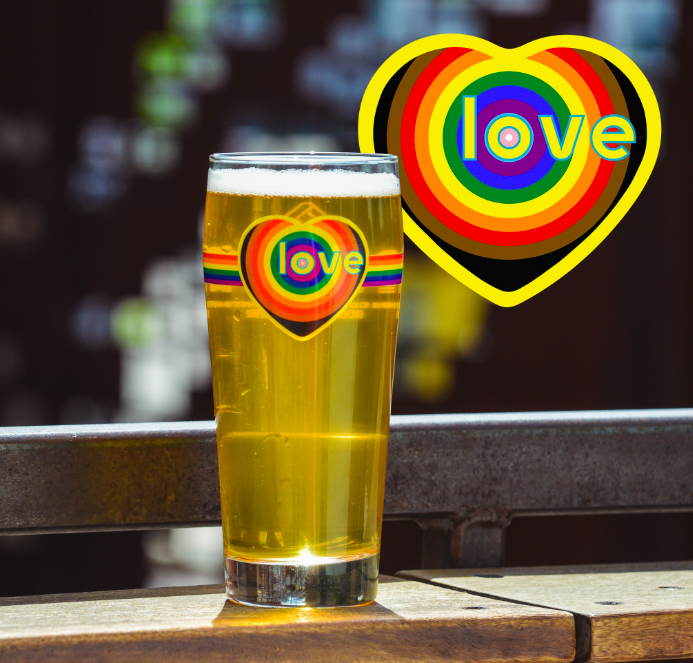The Art and Science of Hazy Beer
By Dr. Laura Burns, Director of Research & Development at Omega Yeast Labs
Hazy IPAs have been around for a little over a decade, and the same goes for Omega Yeast Labs which opened in 2013. Craft beer was ignited by the haze craze, and inherently so was the rapid growth in popularity of our British V strain (also known as London Ale III, London Fog, Foggy London, or “the haze-maker” as one of our owners calls it). We quickly heard feedback from our brewing customers about how difficult it was to make Hazy IPAs, and the not-so-obvious solution for stable haze was the yeast. We didn’t quite understand how, but British V was helping make the most juicy and hazy IPAs.
Fast forward to 2019 and the R&D department at Omega Yeast was officially formed. Our research scientist Keith Lacy and I were starting up several projects involving flask fermentations, and the most striking observation wasn’t plato, pH, or aroma/taste, but that visually these flasks ranged from super brite to massively hazy.
Many factors are known to impact haze, so we developed a protocol to control for as many as possible. Wort was prepared using the same 2-row base malt and the pitch rate, fermentation temp, and sampling methods were kept consistent to hone in on the haze produced by yeast in dry-hopped beer styles. After months of testing, several important factors influencing haze began to stand out:
1. Yeast Strain
When we looked at the rest of our strain collection, we found that British V was not unique and there were a handful of brewing strains that produced significant haze. In our flask fermentations, yeast that produced >200 NTUs (nephelometric turbidity units) with a late fermentation dry hop at 8 g/L (about 2 lbs/bbl) were termed “haze-positive” (blue in the chart below).

2. Dry Hop Timing
Our experiments have shown that dry hopping close to the end or after fermentation is best for inducing yeast-derived haze. Dry hopping in the first 24 hours leads to less haze and can even prevent haze from forming with later dry hop additions.

3. Dry Hop Dose Rate
Testing dry hop rates (0.5, 1, 2, 3, 4 lbs/bbl), we found a linear correlation to the amount of haze formed: the heavier the dry hop, the more the haze. Keep in mind though, hazy is hazy. By eye you might have a hard time telling the difference between skim milk and whole milk – both are pretty hazy!
4. Dry Hop Variety
This part of the research is surprising and likely provides some clues into how dry hopping is leading to the yeast-dependent haze. What component of the hops is providing the signal or is part of the haze particle? We don’t currently know, but different hop varieties lead to different amounts of haze with various combinations of haze-positive and haze-neutral yeast. Hop suppliers might be onto something with hop products that stabilize haze and we are keeping a close eye on their findings!

Being the nerds we are, we wanted to know the mechanism behind the haze-positive phenotype. We had a couple of breeding projects generating yeast hybrids, and we had crossed British V to a haze-neutral strain. To our surprise, the resulting hybrids were split between haze-positive and haze-neutral (in genetics terms 2:2 segregation). This pattern of inheritance suggested that the haze-positive phenotype was dominant and linked to a specific gene, and from there we set off on our quest to find the haze gene. This seems pretty straightforward, but it was way more complicated than we had anticipated!
This project went down a deep hole of genetics and long-read sequencing data led us to a gene with an unknown function, which we named HZY1. This HZY1 gene is prone to mutations that involve repetitive DNA resulting in versions (alleles) of the gene that are anywhere from 580 base pairs (bp) to >2500 bp. Within any given strain, we found up to 5 different versions of HZY1! So it isn’t a straightforward answer to which version causes haze, but there is a strong correlation between longer versions of the HZY1 gene and haze-positive phenotype. However, even our haze-neutral strains contribute to small degrees of haze (think the small amounts of haze in most dry-hopped beers). When the HZY1 gene is disrupted in every brewing strain we have tested, the resulting dry-hopped beers are significantly less hazy.


Uncovering the HZY1 gene was super cool, but it didn’t answer how yeast causes haze in beer. We do however have some good hints about how this gene could physically lead to haze from the DNA sequence itself. The HZY1 gene encodes a secreted glycoprotein that is anchored to the cell surface; very similar to the FLO genes that encode the cell surface proteins that lead to flocculation.
The HZY1 gene is heavily glycosylated (coated with sugars) and we can detect the Hzy1 glycoprotein in the haze particles (~500 nm colloids) that form after dry hopping with haze-positive yeast. At this point, we can confidently say that stable haze shouldn’t rely on yeast cells in suspension, but yeast-derived Hzy1 glycoprotein will do the trick!
What did you say? You don’t make hazy beer, and you don’t care? Well, this haze research isn’t all about making hazy beer. It has helped us understand a lot about avoiding haze too! The brewing strains you use have a version of HZY1 that either leads to a small amount of haze or a large amount of haze. If you want to make a dry-hopped beer that is brilliantly bright, chances are good that getting rid of HZY1 in your house strain will make that easier. We still have more to learn, but we ultimately hope to make the execution of hazy and non-hazy beer more of a science and to provide brewers with more tips, yeast options, and predictability when designing their IPA brands.
If you want a deeper dive into the research, check out our submitted paper here!
Interested in reading more about all things nerdy in the brewing world?
Check out the article: VDK & Warm Dry Hops… A Love Story.









